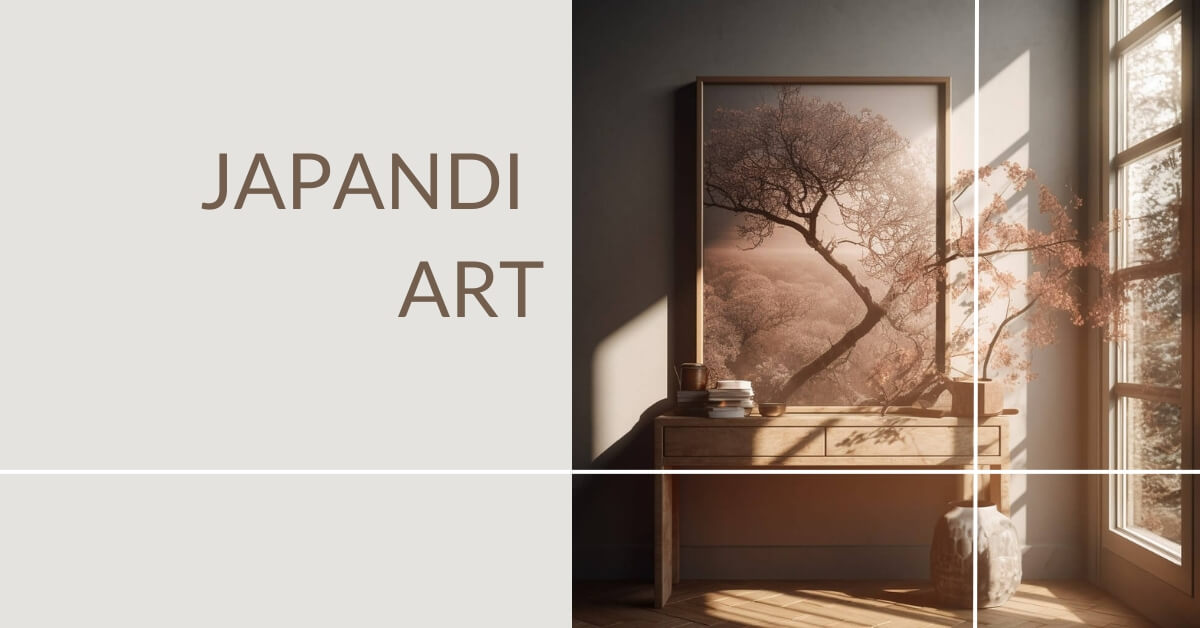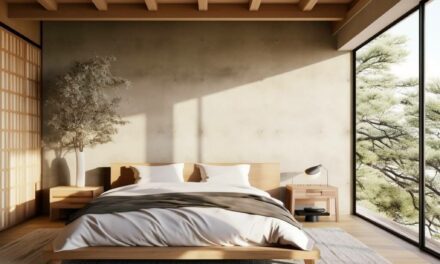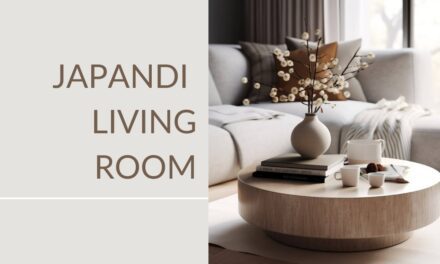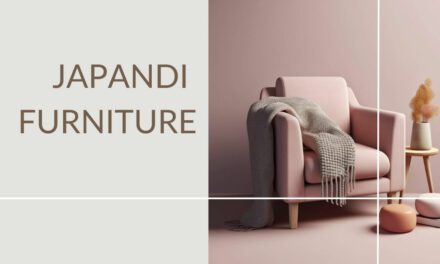In an increasingly interconnected world, cultural fusions are becoming more and more common, influencing everything from our food, to music to interior design.
And a prime example of this is Japandi art.
It’s an emerging aesthetic that really hit the mainstream in 2017 and boomed during the 2020 pandemic, and it marries the minimalistic elegance of Japanese design with the functionality and rustic, cozy warmth of Scandinavian (or ‘Scandi’) design.
For me, it’s a style that is not just about decoration, but about creating a sense of calm, a refuge from the relentless pace of the modern world.
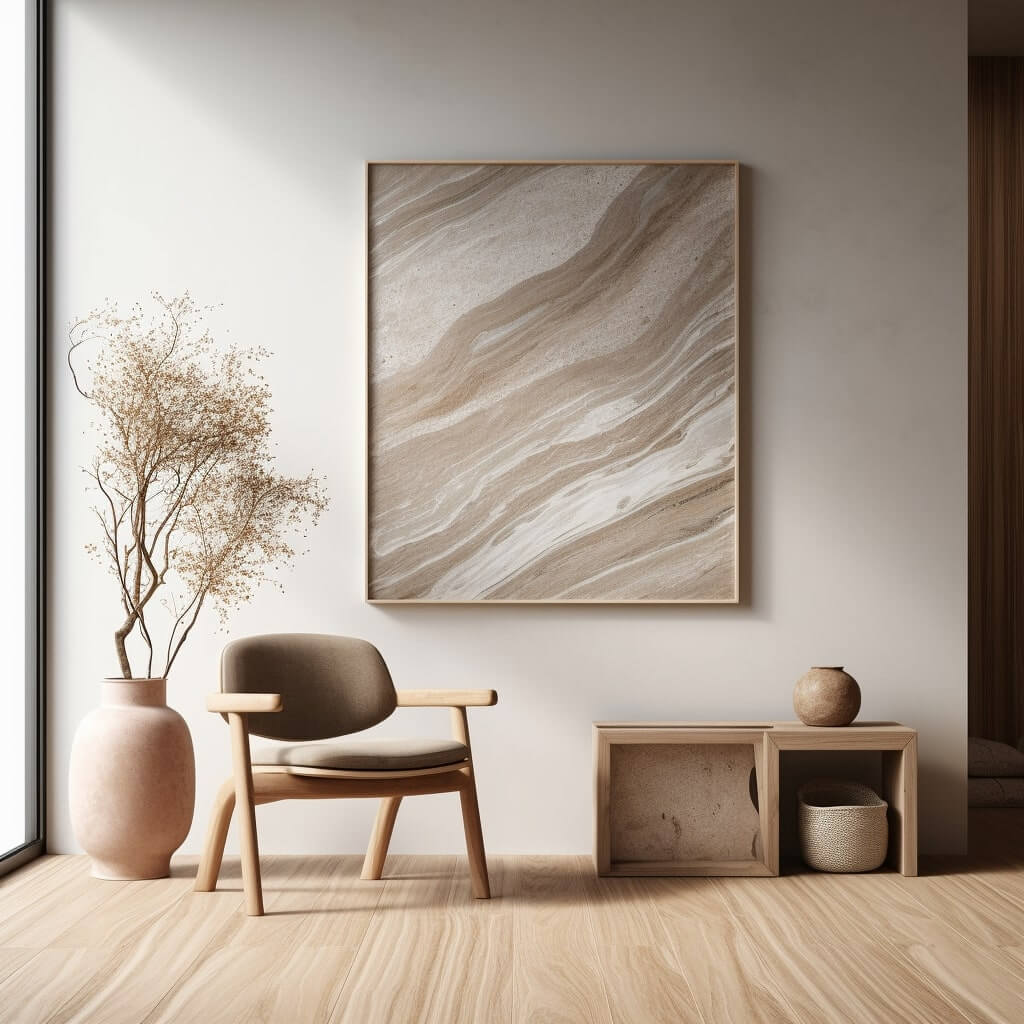
Japandi Wall Art Prints
I find that Japandi wall art prints serve as a focal point in this design style, bringing together the defining elements of both cultures.
Think tranquil landscapes, simple line drawings, and abstract compositions with muted, earthy tones.
I tend to looks for prints framed in natural wood that embody the Japandi ethos of ‘less is more’.
For me, the aim is to decorate with a subtle elegance, a touch of nature, and a hint of the handmade, reflecting the Japanese concept of ‘Wabi-sabi,’ the beauty in imperfection and transience, and the Scandi love for simplicity and functionality.
- Japandi art often features tranquil landscapes and simple line drawings.
- Colors are typically muted, earthy tones.
- Frames are commonly made from natural wood.
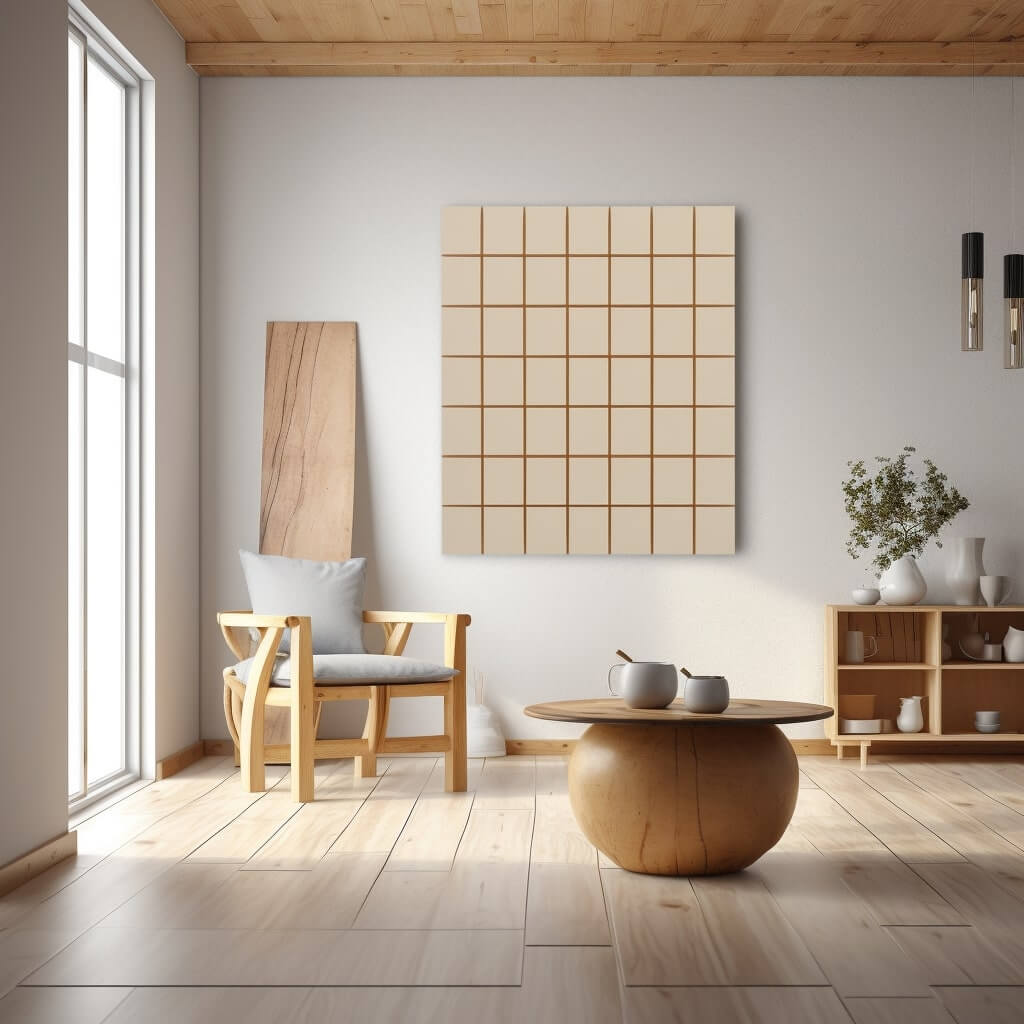
Japandi Wall Art for Living Rooms
I think your living room is the ideal space to showcase Japandi decor and artwork.
From tranquil depictions of mist-covered mountains that evoke the Japanese love for nature’s fleeting beauty, to simple, muted abstract pieces that mirror the Scandinavian preference for understated elegance, the art should invite calm and conversation.
Remember, the key is balance – between bold and subtle, modern and traditional, Japanese and Scandi.
- Japandi living rooms are an ideal space for showcasing art.
- Artwork should create a soothing, serene atmosphere.
- Depictions of nature and muted abstract pieces are popular.
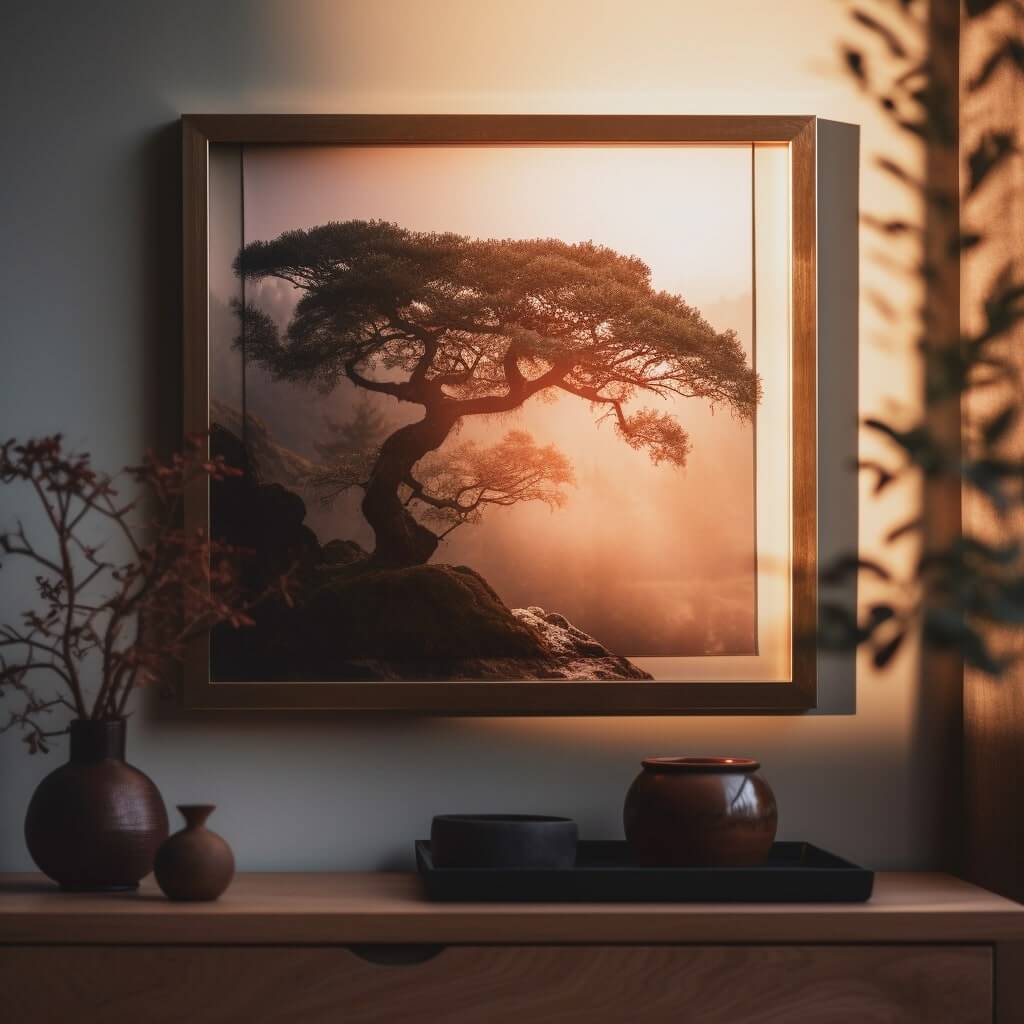
Large Japandi Wall Art
I oftne find that large Japandi wall art pieces can serve as the centerpiece of a room, drawing the eye and tying together the design elements.
In keeping with the minimalist ethos, I usually look for pieces that feature simple, bold designs – perhaps a single, striking line drawing or an expansive, calming landscape.
The size of the artwork provides a sense of grandeur, while the simplicity of the design maintains the uncluttered, peaceful aesthetic that is at the heart of the Japandi style.
- Large Japandi art can be the centerpiece of a room.
- They often feature simple, bold designs.
- The size provides a sense of grandeur, maintaining an uncluttered aesthetic.
- Artwork may include striking line drawings or expansive landscapes.
- Large pieces tie together other design elements in the room.
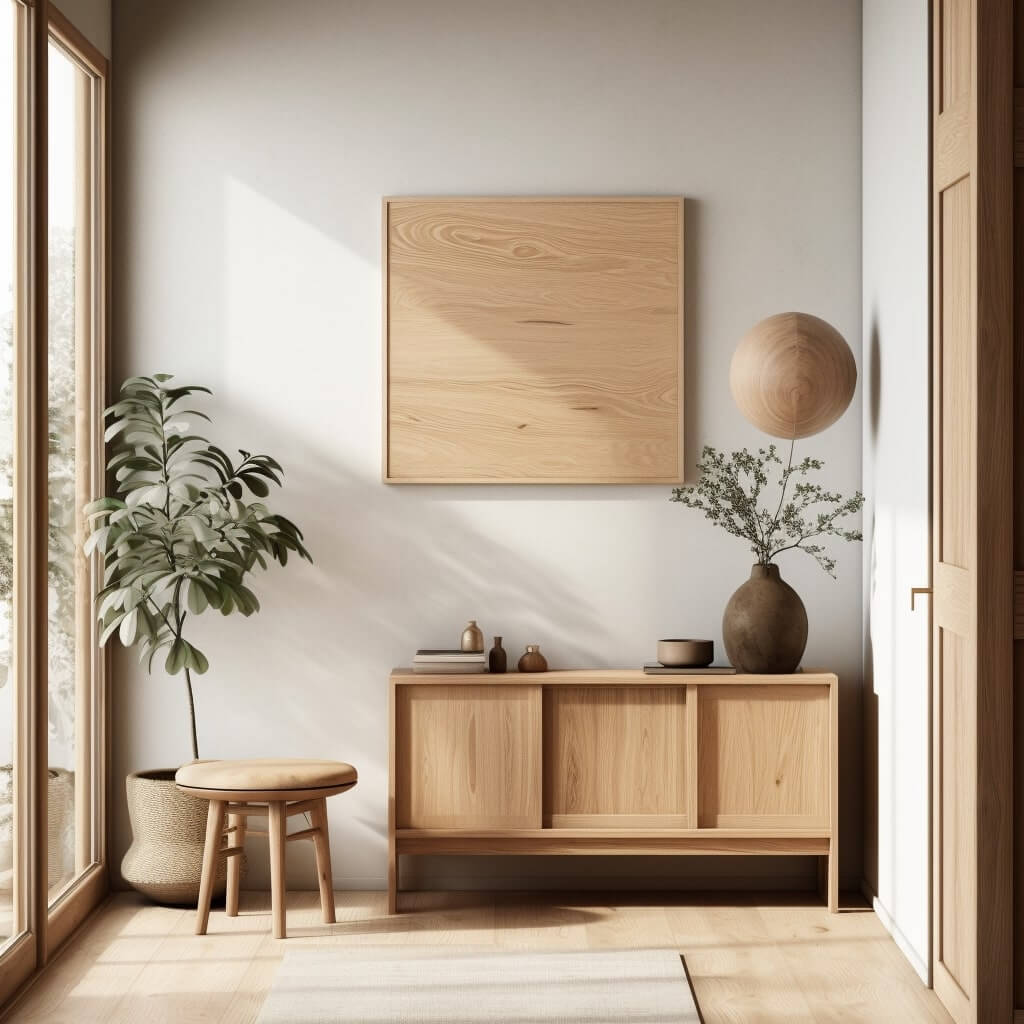
Modern Japandi Wall Art
Modern Japandi wall art takes traditional elements and gives them a contemporary twist.
I find that abstract pieces, with their emphasis on form and color over realistic representation, are a popular choice.
For me, these might incorporate geometric shapes, bold lines, and a restrained Japandi color palette, combining the modern, minimalist leanings of both Japanese and Scandi design.
- Modern Japandi art gives traditional elements a contemporary twist.
- Abstract pieces are popular, emphasizing form and color over realism.
- Art may incorporate geometric shapes and a restrained color palette.
- Modern pieces contrast with natural materials in Japandi interiors.
- This style blends organic elements with abstract designs.
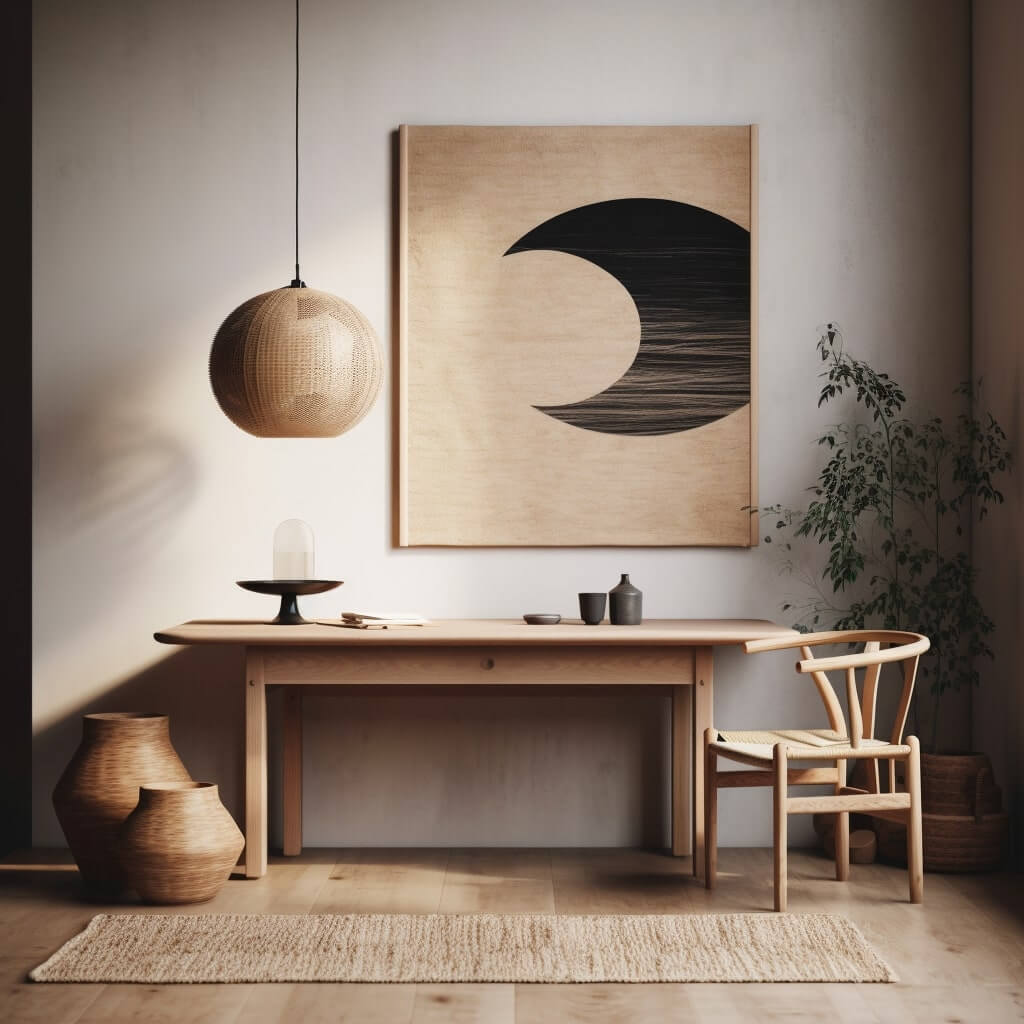
Japandi Wallpaper
When you’re decorating at home or for someone else, Japandi wallpaper is the base of your color palette, and extends the aesthetic to the very walls of your rooms.
With patterns inspired by nature – I think leaves, branches, and waves – and a color palette leaning towards muted earth tones, the wallpaper contributes to the overall serene, natural feel of a Japandi-style space.
Keep things simple.
I feel it’s a backdrop that complements rather than competes with the other elements of the room, providing a canvas for Japandi furniture and artwork to shine.
- Japandi wallpaper is plain, or features patterns inspired by nature.
- Colors lean towards muted earth tones.
- Wallpaper serves as a complementary backdrop for room elements.
- Designs do not compete with but enhance other room elements.
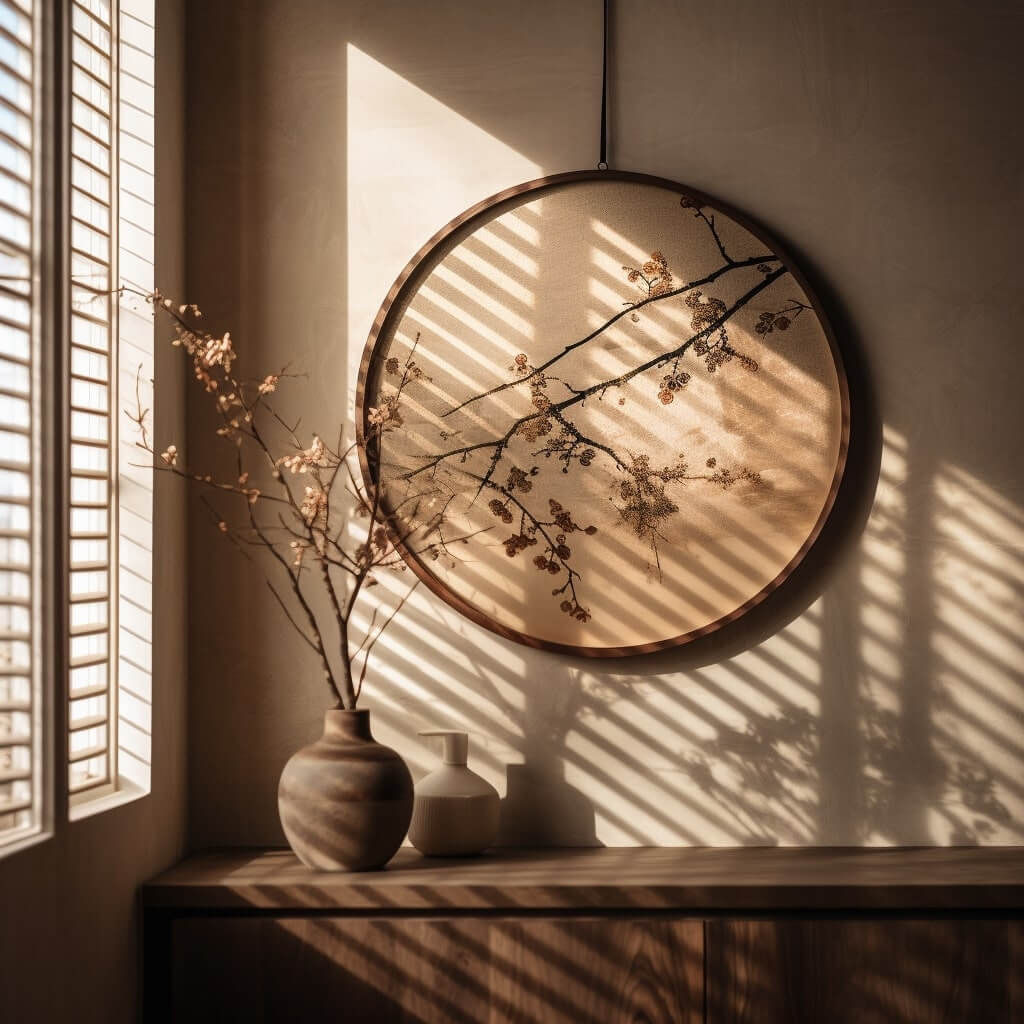
Japandi Abstract Art
I think abstract art, with its emphasis on expressing a mood or feeling, fits well within the Japandi aesthetic.
Japandi abstract art often leans towards simplicity and subtlety, with a focus on form, line, and color over detailed representation.
It’s about capturing the essence of a subject or idea, which I notice is much like the minimalist haiku in Japanese poetry.
It might be a simple, monochromatic line drawing, a color-block landscape, or an exploration of shape and space.
Personally, the beauty of abstract art lies in its ambiguity, its openness to interpretation.
- Japandi abstract art leans towards simplicity and subtlety.
- Focus is on form, line, and color rather than detailed representation.
- It invites personal interpretation and contemplation.
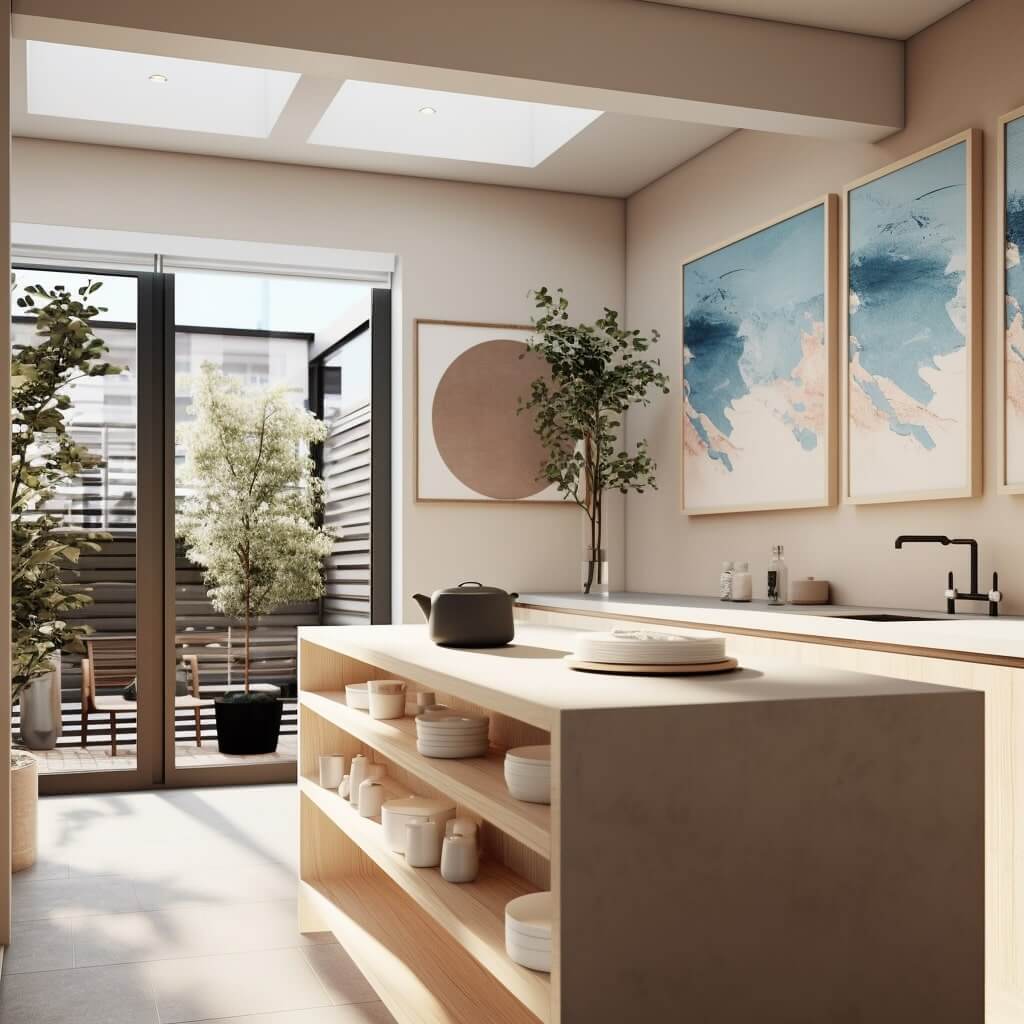
Where to Buy Japandi Art
Japandi art is gaining popularity and can be found in various locations both online and offline.
I find that online retailers like Etsy and Amazon, offer a wide range of Japandi art prints from artists around the world.
And for original pieces, I often explore local art galleries or online platforms like Saatchi Art.
Additionally, many home décor and furniture stores now carry Japandi-style artwork, given its increasing popularity in interior design.
Always remember, the key to selecting Japandi art is to find pieces that speak to you and embody the principles of this design philosophy: simplicity, functionality, and a deep connection to nature.
- Online retailers like Etsy and Amazon.
- Local art galleries or platforms.
- Home décor and furniture stores.
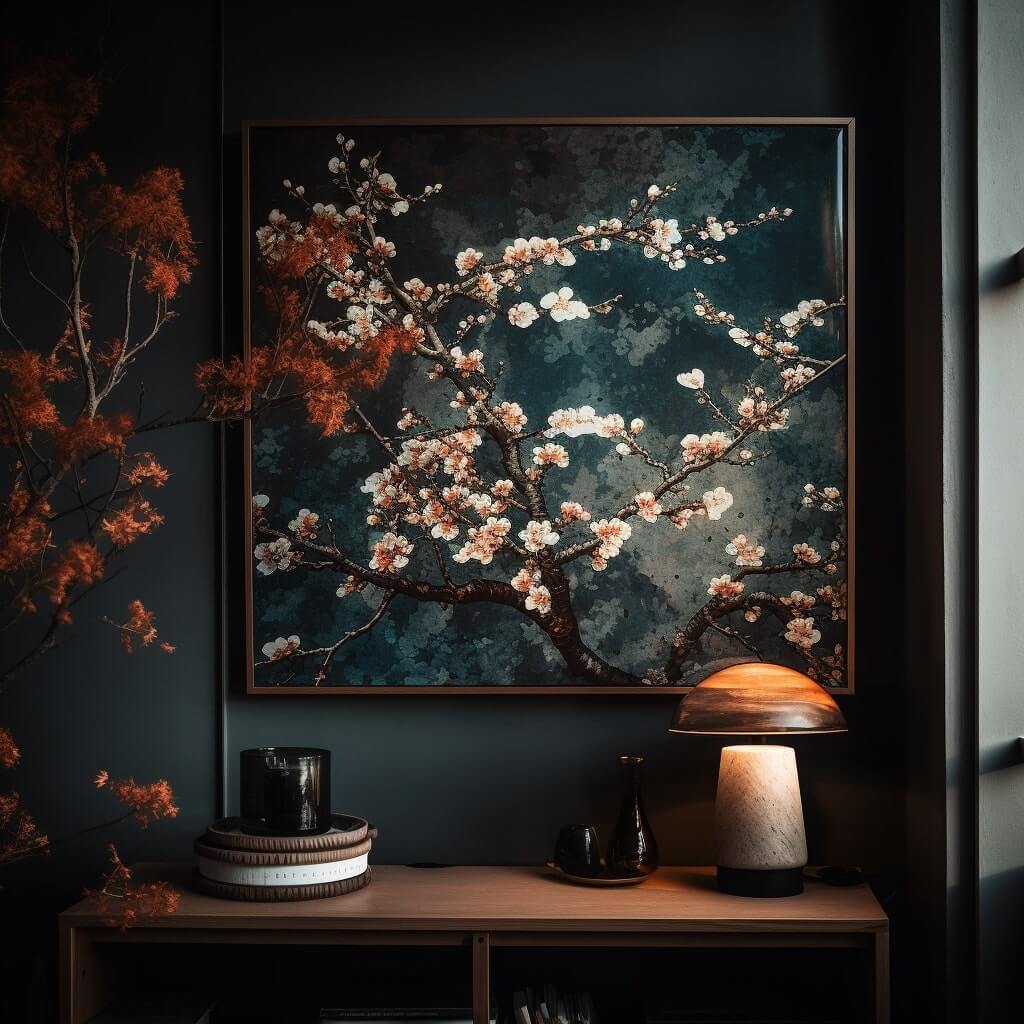
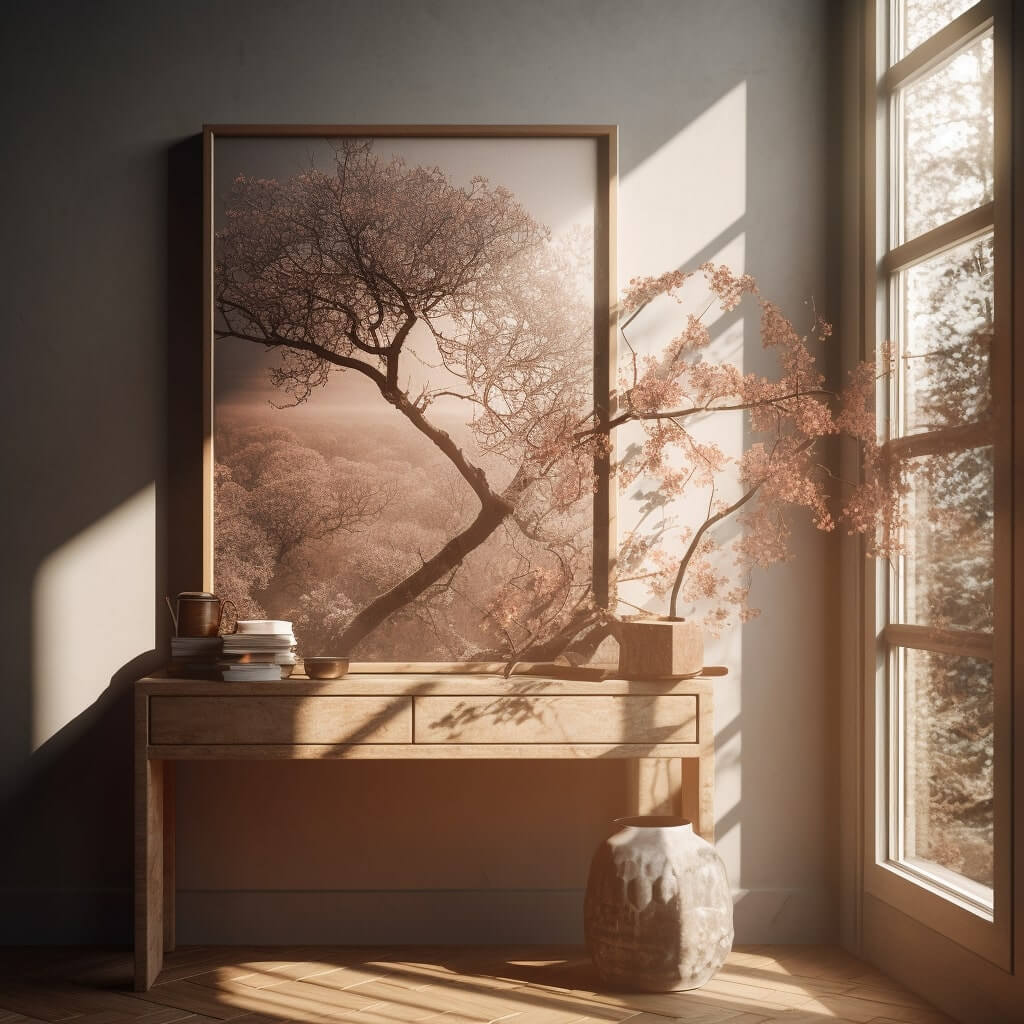
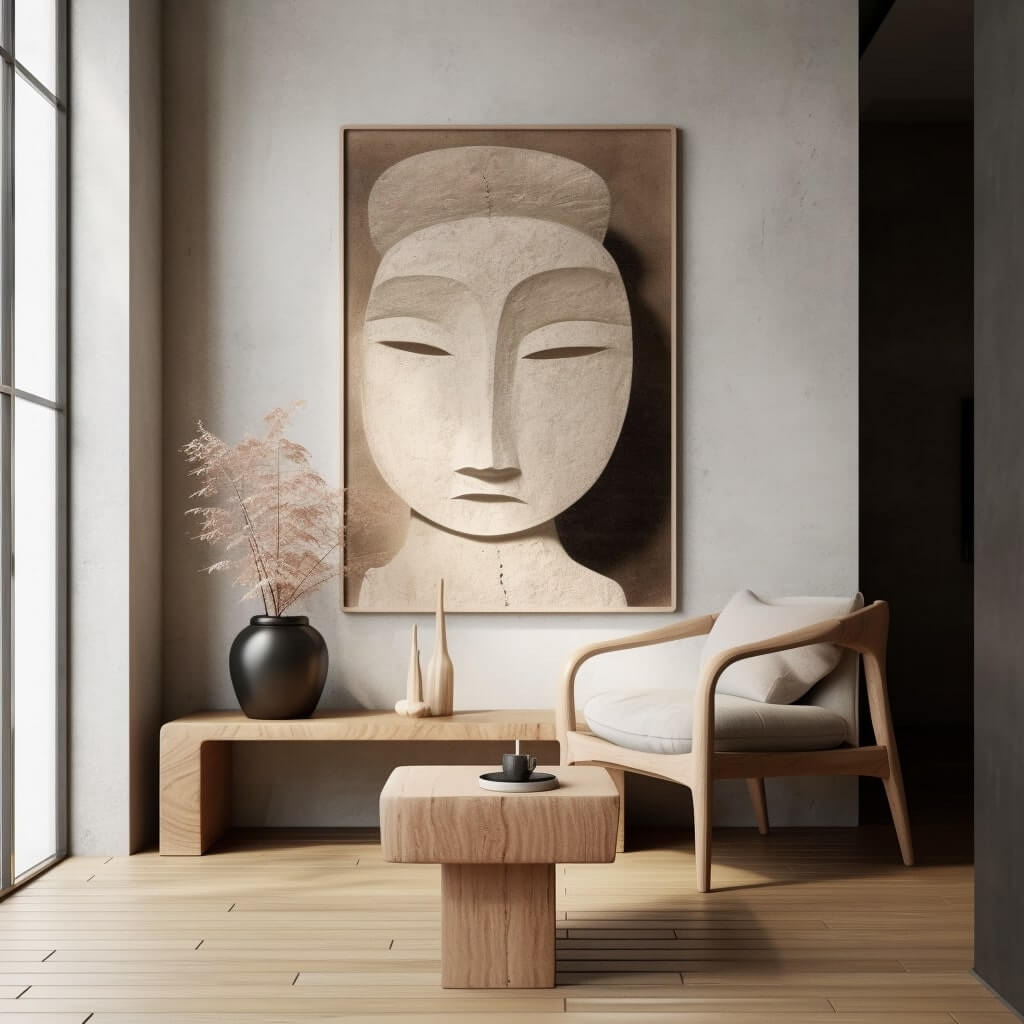
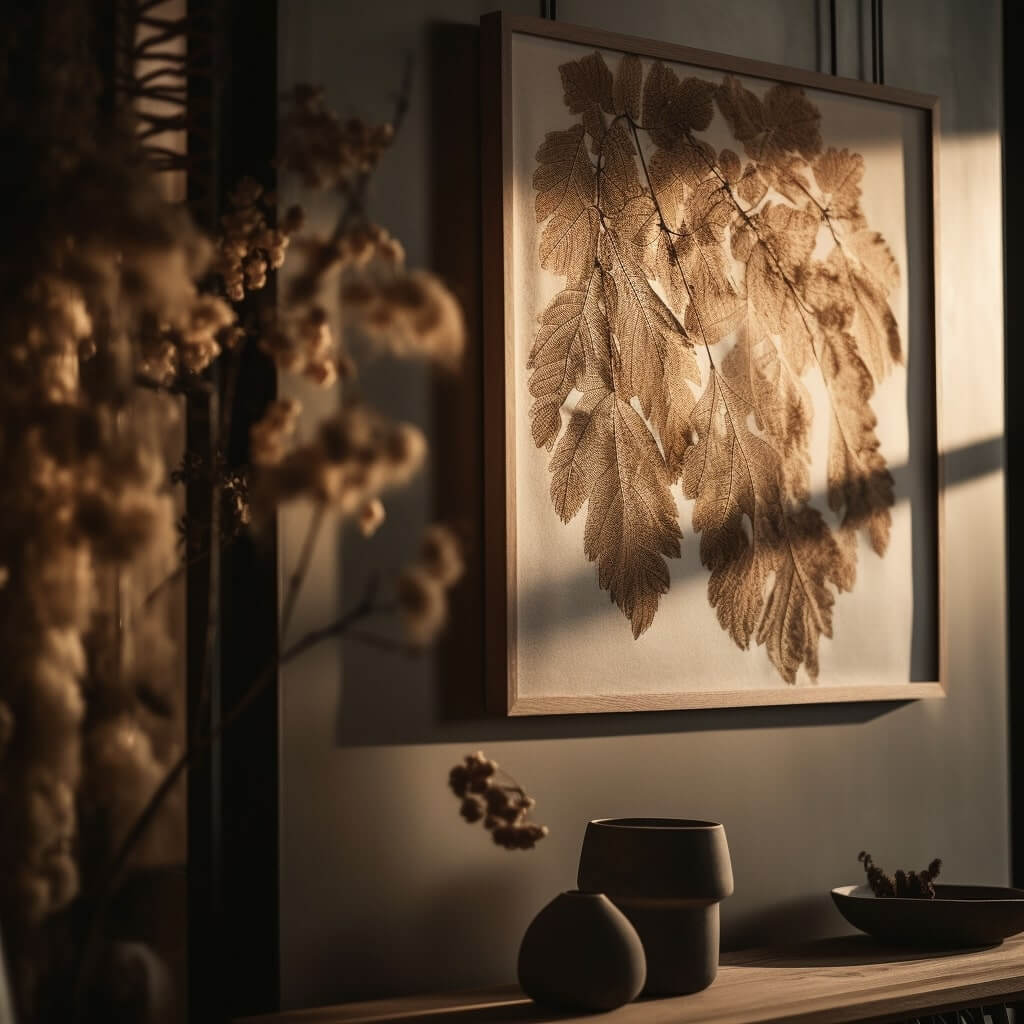
What is a Japandi wall art?
Japandi wall art reflects the style’s minimalist aesthetics and natural themes. It could include simple, abstract pieces in muted colors, artwork showcasing nature-inspired elements, or traditional Japanese ink paintings (sumi-e).
What is the difference between Scandi and Japandi?
Scandi design features bright, clean lines and minimalist, functional design. Japandi, a fusion of Scandinavian and Japanese, has a warmer palette, greater emphasis on natural materials, and combines Scandi functionality with Japanese craftsmanship.
What are the rules of Japandi style?
Japandi style rules include: embracing minimalism, utilizing natural materials, harmonizing muted color palettes, balancing functionality with aesthetics, and incorporating elements of nature into your decor.
What material is used in Japandi style?
Japandi style predominantly uses natural materials, such as wood, bamboo, stone, and ceramics. It also embraces sustainable and ethically sourced materials.
How to make a Japandi style home?
To create a Japandi style home, embrace minimalism, use a mix of natural, muted colors, incorporate natural materials and plants, and balance the use of space. Opt for furniture that’s simple yet functional, and consider handmade or sustainably sourced items.
What kind of wall art is most popular?
The popularity of wall art varies greatly depending on personal taste and current trends. However, abstract art, botanical prints, minimalist line art, and vintage posters are often popular choices.
What is Japandi Abstract Art?
Japandi Abstract Art is a style of artwork that combines the minimalism of Japandi design with abstract elements. It often uses muted color palettes and simple forms, exuding a calm and serene aesthetic.







